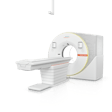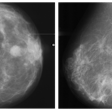Radiologists, neuroscientists, and biomedical engineers have identified a new clinical marker that could be associated with concussions from youth contact sports such as tackle football, research to be presented December 1 at RSNA 2024 suggests.
 Christopher Whitlow, MD, PhD.
Christopher Whitlow, MD, PhD.
Called aperiodic activity, the marker reflects brain cortical excitability, a vital part of brain function, according to Christopher Whitlow, MD, PhD, of Wake Forest University School of Medicine in Winston-Salem, N.C.
"Our study opens the door to new ways of understanding and diagnosing concussions, using this novel type of brain activity that is associated with concussion symptoms," Whitlow said in an RSNA statement. "It highlights the importance of monitoring kids carefully after any head injury and taking concussions seriously."
The study indicated that concussions appear to cause slowed aperiodic activity in areas of the brain where cortical excitability plays a key role in cognitive functions such as learning and memory, information processing, decision-making, motor control, wakefulness, and sleep, according to the researchers.
"Most previous neuroscience research has focused on rhythmic brain signaling, which is also called periodic neurophysiology," lead author and presenter Kevin Yu, a neuroscience student at Wake Forest, said in the statement. "On the other hand, aperiodic neurophysiology refers to brain signals that are not rhythmic."
For the study, the investigators combined a clinical evaluation tool for concussions called the Post-Concussive Symptom Inventory with pre- and post-season resting-state magnetoencephalography (MEG) data from 91 high school football players, of whom 10 were diagnosed with a concussion. MEG is a neuroimaging technique that measures the magnetic fields that the brain's electrical currents produce.
Data were source-imaged, frequency-transformed, and parameterized using specparam, the team noted, adding that they used linear mixed models to examine the effects of concussion on pre- to post-season changes in neurophysiological activity. They also conducted colocalization of the resulting beta-weight maps with 19 neuromaps atlases using autocorrelation-preserving null permutations.
"This study is important because it provides insight into both the mechanisms and the clinical implications of concussion in the maturing adolescent brain," said co-lead author Alex Wiseman, PhD, of Fraser University in Burnaby, British Columbia, Canada.
The team observed aperiodic activity present in areas of the brain that contain chemicals linked with concussion symptoms like impaired concentration and memory. For their neuroradiology poster session, Yu and colleagues noted changes in the superior-frontal cortices, with the concussion-aperiodic relationship strongest in brain regions with high normative densities of cholinergic and noradrenergic neurotransmitter systems.
"Reduced excitability is conceptually a very different brain activity change than altered rhythms and means that a clear next step for this work is to see whether these changes are related to effects of concussion on the brain's chemistry," Wiseman added.




















